Doritos Nachos, Pasta With Mayo, Corn Pizza: How Other Places Imagine American Food

A hamburger, Finnish-style, with rye bread instead of a bun (Photo: JIP/Wikimedia)
One of America’s greatest qualities–or, perhaps, its greatest failing–is its skill at taking food from anywhere in the world and transforming it to fit the national palate. The country has Americanized Chinese food, with its extra sweet sauces, Americanized Thai, stripped of spice and fishy funk, Americanized Italian, blanketed in gooey cheese, and Americanized Mexican, with spice dialed down and cheese dialed up.
But the rest of the world can play at this game, too. While Americans have excelled at adopting and reinterpreting food from other places, what have other places done with American cuisine?

When I asked friends and acquaintances for stories of American food, eaten abroad, that was exactly right or weirdly wrong, I heard about Caesar salad with mounds of shredded garlic, sushi filled with queso fresco and Gone with the Wind-branded ice cream of an indistinguishable flavor. But mostly, people had stories to tell about four types of food: Tex-Mex, spaghetti, pizza, and, above all, burgers—perhaps the only iconic American food that is thoroughly ours.

Corn pizza in Japan (Photo: iyoupapa/Flickr)
To talk about American food means going through the mind-bending exercise of defining it. Besides the foods of a traditional Thanksgiving table–turkey, green bean casserole, cranberry sauce, marshmallow-topped sweet potatoes and pumpkin pie–what should count as American?
While gnocchi doesn’t seem classically American, for instance, spaghetti with marinara sauce does. And a meatball sub, covered in melted cheese? This could not hail from any place besides North America. Most sausages on a roll don’t count; hot dogs do. Tacos aren’t really American, but Tex-Mex, especially nachos and quesadillas, is.
The easiest shorthand might be that American food is anything that you can find at a diner—burgers, mac-and-cheese, Cobb salad, club and roast beef sandwiches, hot wings and jalapeño poppers, pancakes, eggs and bacon, meatloaf, and fried mozzarella sticks–plus the fried chicken, barbecue and biscuits that anchor Southern cuisine.
When you look for restaurants outside this country that serve “American” food, most likely, they’ll be modeled after a diner, too. In Paris, Breakfast in America has been serving up pancakes, eggs and bottomless cups of coffee amid chrome since 2003. In Prague, the American-themed James Dean restaurant features “authentic US diner style furniture.” In Moscow, a chain called Starlite Diner serves “very plausible burgers…in a very plausible 50s kitschy American diner setting,” my friend Dave reports. In Reykjavik, the Laundromat Cafe serves comfortingly familiar blueberry pancakes, tuna-salad sandwiches, and the mainstay of any good diner, a hamburger topped with cheese and accompanied by fries.
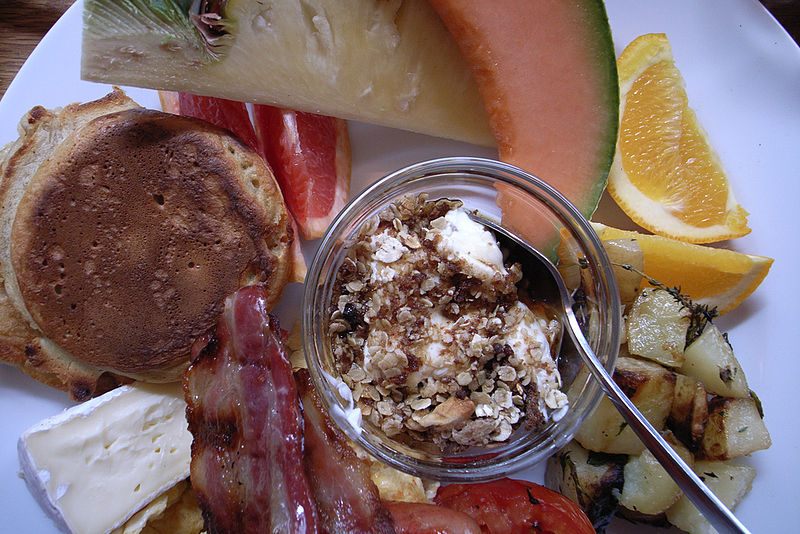
Breakfast at the Laundromat Cafe in Iceland. (Photo: Thomas Angermann/Wikimedia)
Hamburgers may share the name of a large German city, but as far as anyone can prove, they seem to be distinctly American. No one’s quite sure who flipped the first lunch-counter burger, but by the early 20th century, they had spread across the country. The hamburger is also the food that America has most successfully exported: it’s now possible to have American food almost anywhere in the world, in the form of a McDonald’s hamburger. (India, where a Big Mac is made with chicken and called a Maharaja Mac, is one major exception.)
Some places, though, have created surprising variations on the classic diner burger. In Australia, a fully loaded burger comes with a fried egg and slices of beet. Senegalese restaurants add an egg and the fries inside the bun. In Japan, burgers are “way better than in the U.S.,” says Uriah Miller, who’s been living there for the past six months. At one Tokyo burger place called Blacows, he says, “What makes their burger so great is the bun. Unlike buns in America, where you grab the burger with your hands and the bun squeezes everything out, the bun at Blacows is airy and light, yet satisfying with a slight chewiness like the skin of a bagel.”
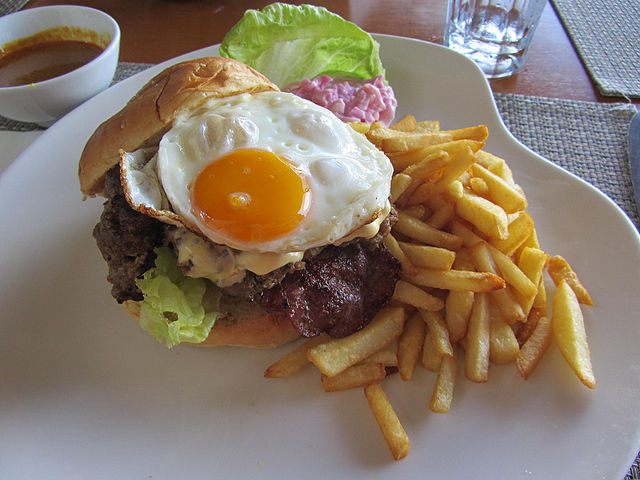
A burger in Malaysia (Photo: Jason Thien/Flickr)
Burgers abroad can go wrong, though. European supermarkets sell a mysterious “American burger sauce” that seems to be inspired by McDonald’s special sauce. (It’s often a sickly, light pink or orange color.) And when Serena Newmark, a Texan living in Germany, tried to go out with her husband for a birthday burger at a steakhouse, the dish that came out was a bunless, bare burger, served with a small loaf of garlic baguette. “He almost cried,” she writes. “Luckily we did find a good all-burger place a few months later, but when we go we are the only ones not eating burgers with knives and forks.”
This is the way of the world: ordering a familiar food in an unfamiliar place is most often disappointing or even mildly disgusting. But sometimes, it’s surprising in a good way.
Following are riffs on American staples–spaghetti, pizza, and Tex-Mex–eaten abroad, that, for one reason or another, stuck with the people who ordered them long after the meal.
Spaghetti

Pesto pasta in Asia (Photo: Seika/Flickr)
Pasta might be Italian, but spaghetti with red sauce is an American classic. Abroad, though, the simplest spaghetti dishes have gone through some surprising transformations.
In Cuba and in China, spaghetti sometimes comes with ketchup in place of actual tomato sauce. (Another Cuban variation: spaghetti with “white sauce” that turned out to be mayo.) In Senegal, some families now eat spaghetti with butter, fried eggs and a cube of Maggi spice, a sort of all-purpose bouillon cube, sprinkled on top.
But the Japanese city of Nagoya has the most creative take on spaghetti: they take normal noodles with red sauce, pan fry them, and top that with sweet, fresh whipped cream.
Pizza
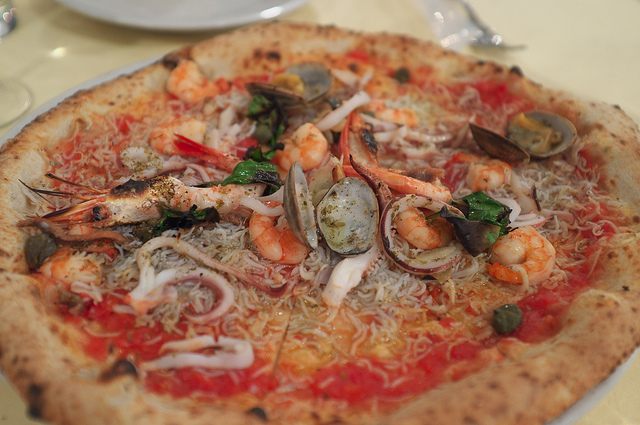
Pizza in Japan (Photo: nekotank/Flickr)
Outside of the U.S., pizza has grown limbs–at least, at international Pizza Huts, in places like the Emirates and Poland. Outside the U.S., the chain has transformed the basic pizza shape into something resembling a flower with cheese or hamburgers tucked into the petals. (There’s also a version where Doritos replace crust entirely.)
Compared to Pizza Hut’s innovations, the Slovak habit of topping pizza with ketchup or the “Pizzasallad,” a simple slaw of cabbage and peppers that Swedes serve alongside their pies, seem downright reasonable.
When restaurants abroad make pizza weird, though, it’s usually through toppings. In Moscow, for instance, one pizza restaurant serve a pie topped with bologna (a reasonable, if surprising, extrapolation) and another with M&Ms and marshmallows (an abomination).
Japan almost definitely wins for originality in pizza toppings, though. A basic pizza often comes with corn, shrimp and sometimes mayonnaise. Rachel Nuwer, a former colleague, told me that she first encountered this dish when a date ordered a pizza to share, “which to both my horror and amusement arrived not adorned with tomato sauce and pepperoni but doused in mayonnaise and large pink globs of fish eggs,” she writes. She went for it anyway, and found it so tasty that “it was my go-to pizza style for the rest of the year.”
Tex-Mex
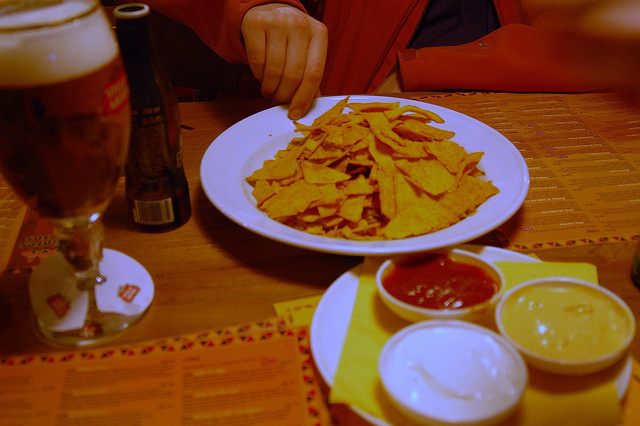
Nachos in Prague (Photo: Todd Huffman/Flickr)
Nachos were invented on the Texas-Mexico border, by a Mexican, for American palates, and of all American staples, they seem the most difficult to translate elsewhere.
“A vegetarian friend of mine once ordered nachos in the Czech Republic because it was the only veggie thing on the menu,” writes Nell Connelly, who spent about a year living in Prague. “Turned out to be Cool Ranch Doritos and ketchup.”
To be fair, according to a recently returned Prague expat, “nachos” there can be any combination of chips and some sort of dip or salsa. And the Doritos issue is not restricted to the Czech Republic. In Britain, reports Martin Zeller-Jacques, who has lived there for years, “a lot of places seem to make nachos using Cool Ranch Doritos…They get most of the other aspects right, but can’t get their heads around ordinary salted tortilla chips.”
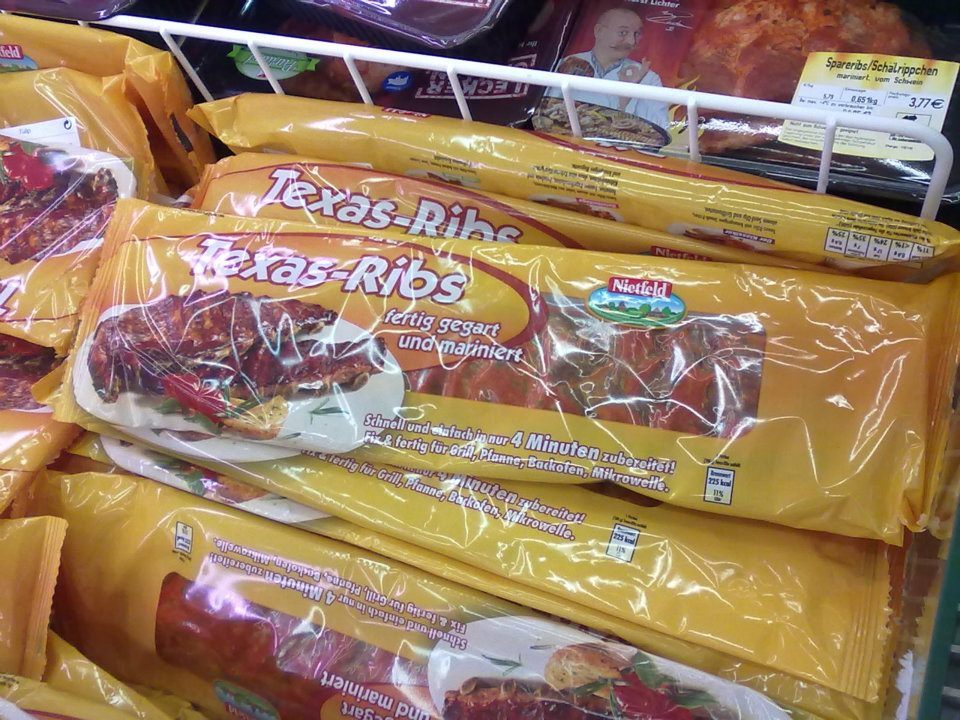
“Texas” ribs in Germany (Photo: Serena Newmark)
The difficulty of understanding Tex-Mex goes beyond nachos, though. In Germany, one Atlas Obscura editor was served ketchup in place of salsa. Newmark, the Texan living abroad, has been baffled by the “Texas” food she’s found in Germany, too, which includes a “Texas”-branded frozen pepperoni pizza. “I have no idea why pepperoni and salami pizza is called Texan,” she says. She has also found “Texas” ribs, featuring a “not exactly authentic” sauce and a “Mexikanische Fleischpfanne”—a “Mexican” meat dish, which was “described as a pile of fried potato slices with garlic and the choice of cream or chili sauce with some kind of meat.” She did not order it.
Mexico, though, can do Texas right. Another native Texan reports finding Austin-inspired BBQ in Mexico City at Pinche Gringo. “They had a lot of the details right, including serving it on brown paper out of a food truck and having Dr. Peppers,” she reports.
Gastro Obscura covers the world’s most wondrous food and drink.
Sign up for our regular newsletter.






















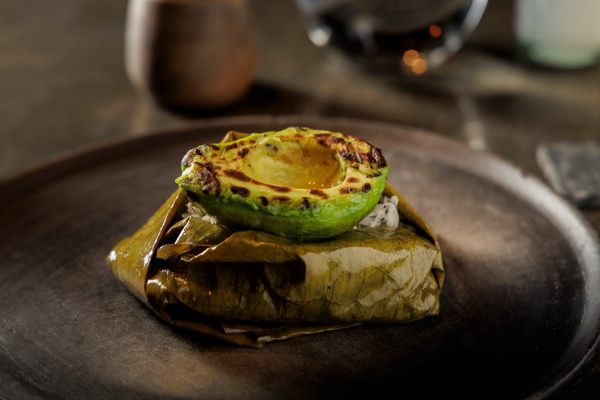

Follow us on Twitter to get the latest on the world's hidden wonders.
Like us on Facebook to get the latest on the world's hidden wonders.
Follow us on Twitter Like us on Facebook